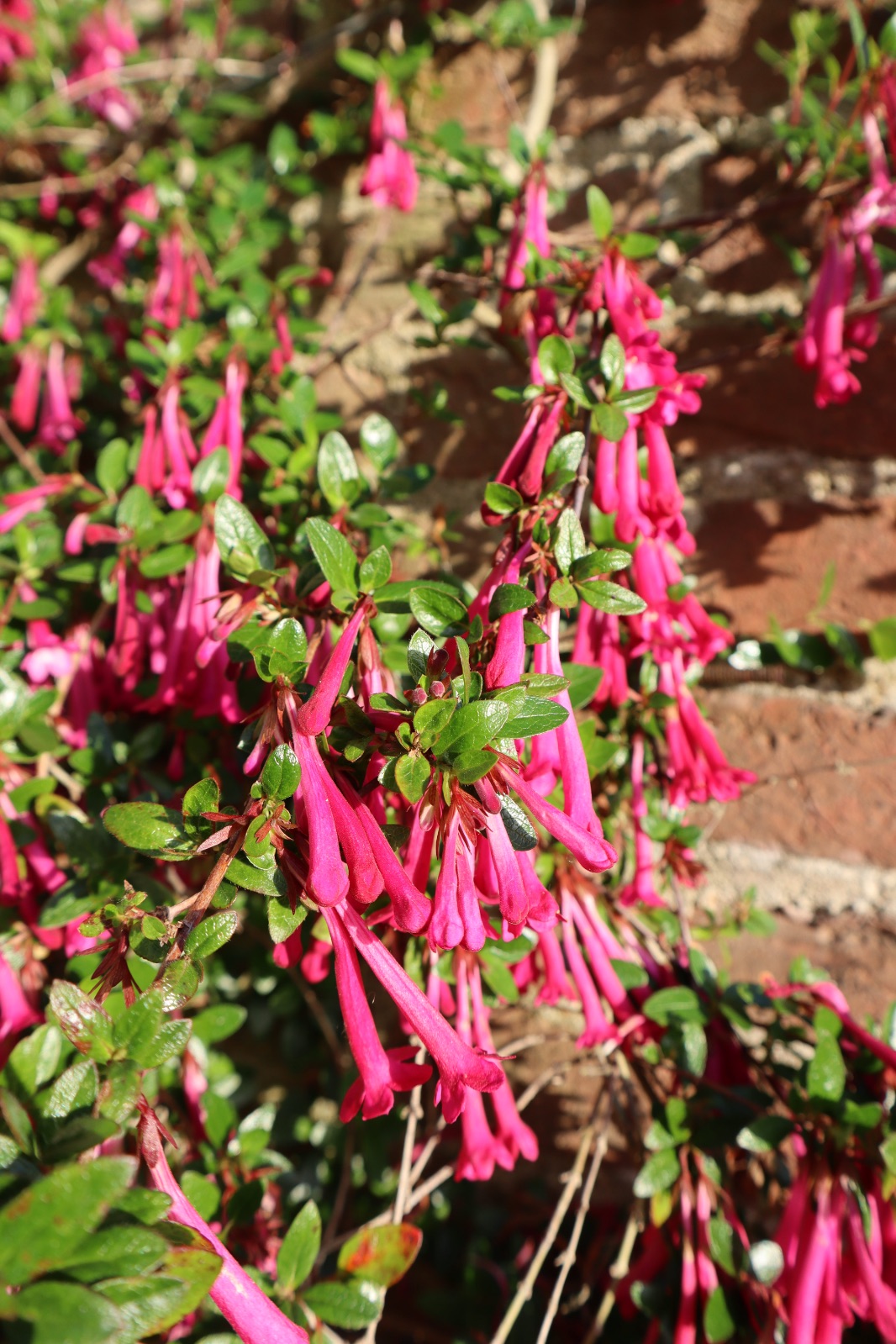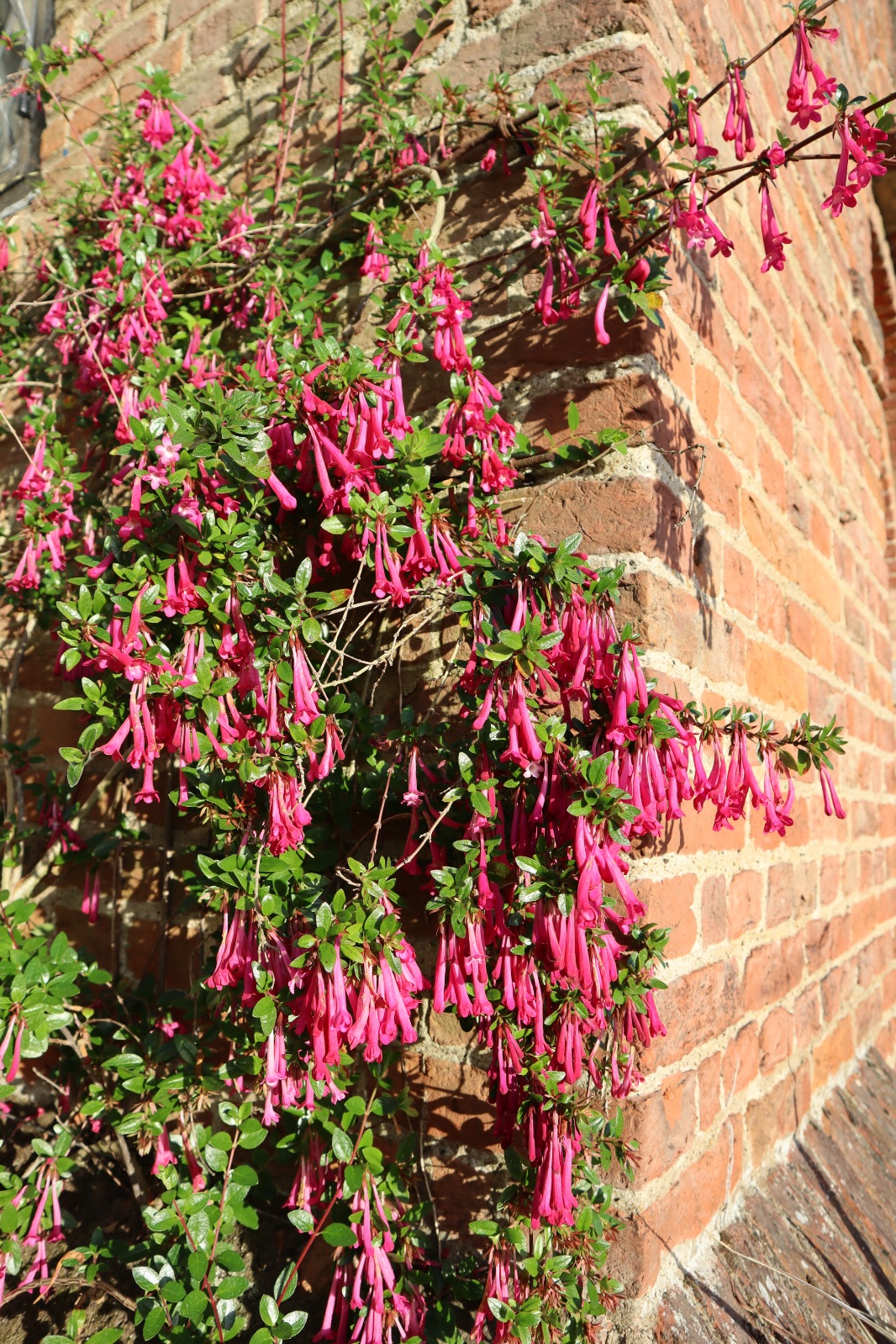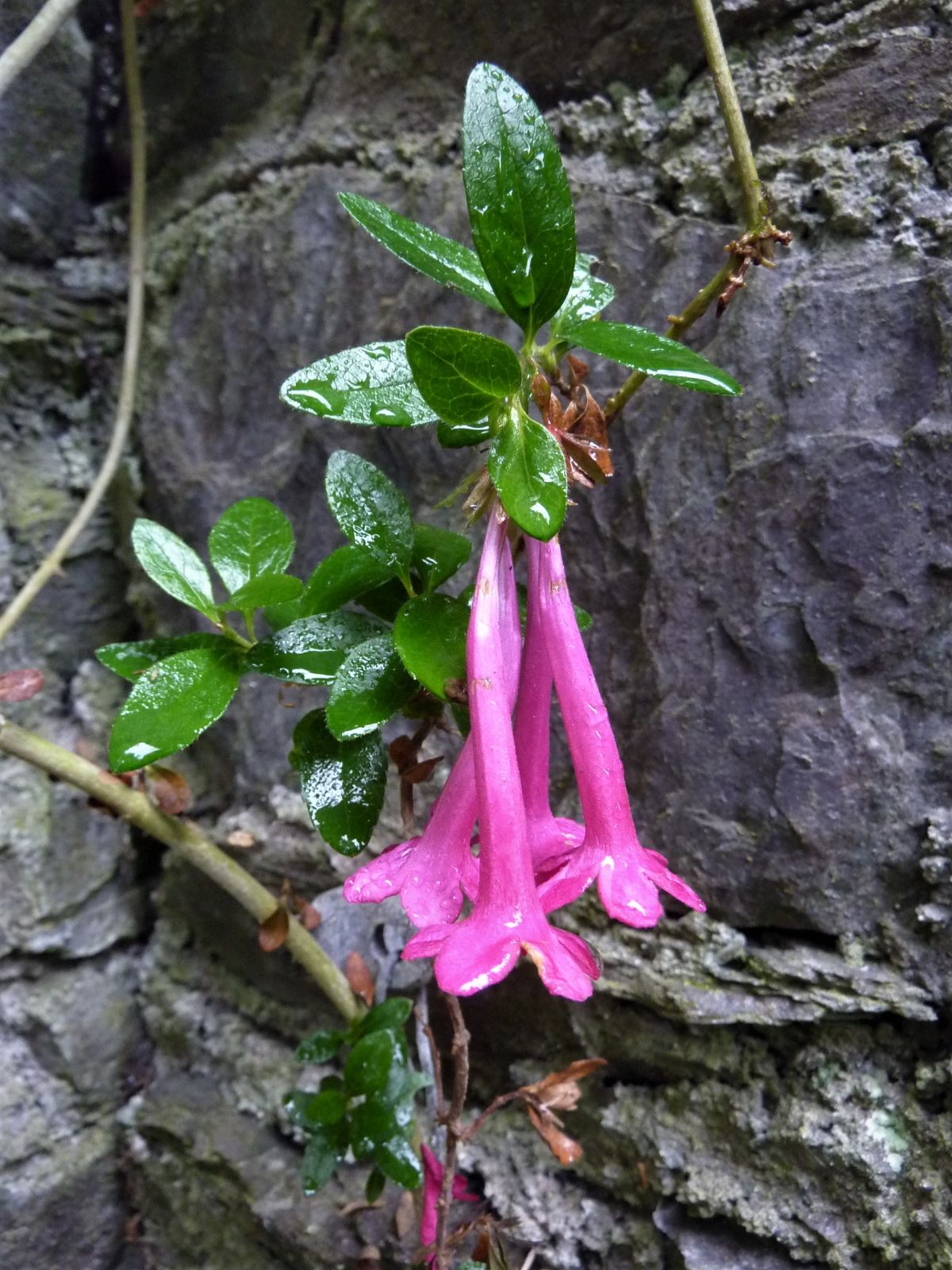Vesalea floribunda
Sponsor
Kindly sponsored by
The Normanby Charitable Trust
Credits
Owen Johnson (2021)
Recommended citation
Johnson, O. (2021), 'Vesalea floribunda' from the website Trees and Shrubs Online (treesandshrubsonline.
Genus
Common Names
- Mexican Abelia
Synonyms
- Abelia floribunda (M. Martens & Galeotti) Decne.
- Linnaea floribunda A. Braun & Vatke
- Vesalea hirsuta M. Martens & Galeotti
- Abelia speciosa Decne.
- Abelia hirsuta (M. Martens & Galeotti) Walp.
A much-branched shrub to 2 m tall (but to 6 m in cultivation with year-round rainfall), shedding its leaves in the dry season but evergreen in cultivation if winters are wet. Shoots often reddish-brown, with stiff hairs; older bark grey-white; pith spongy. Leaves ovate, elliptic to oblong, 1.3–4 × 0.7–2.5 cm, rounded to cuneate at the base and rounded or pointed at the tip; glabrous or sparsely hairy along veins and margins, sometimes bullate; margin entire, remotely toothed or crenate; petiole 1–3 mm long. Inflorescence a compact few-flowered raceme, or flowers axillary near the end of long shoots. Flowers borne year-round (in the wild) except in spring; non-fragrant, single, hanging; peduncles longer towars the base of the raceme, 1–20 mm long, with a pair of bracts. Calyx lobes 5, sometimes with some lobes fused; sepals lanceolate, 6–12 × 1–2 mm, often reddish. Corolla tubular, red-purple, 2.5–4.5 cm long, its lower third straight with deep furrows between the filaments, upper 2 thirds with one side longer; mouth glabrous, with white, yellow and orange lines of speckles; lobes 5. Nectary 3 bands of dense glandular hairs. Style glabrous, as long as the tube. Fruit year-round (in the wild) except May and June. (Landrein & Farjon 2020).
Distribution Mexico Chiapas, Oaxaca, Puebla, Veracruz
Habitat Pine-oak forests and rocky outcrops, 2000–3000 m asl.
USDA Hardiness Zone 8-9
RHS Hardiness Rating H3
Awards AGM
Conservation status Vulnerable (VU)
Vesalea floribunda has the largest and showiest flowers of the Mexican Abelias, though they are not scented. Landrein and Farjon recognised two varieties, var. floribunda in the northern and western part of the species’ limited range and var. foliacea (Villarreal) Landrein, which has a disjunct distribution much further south-east in Chiapas; they speculate that var. foliacea may yet be found further east in the mountains of Guatemala. Visually, var. floribunda is distinguished by its flimsier leaves which are rarely puckered and lack regular crenate toothing, and by its episepals which are much shorter (1 or 2 mm as opposed to at least 5 mm) (Landrein & Farjon 2020). Landrein and Farjon assess both populations as Vulnerable (Landrein & Farjon 2020).
This spectacular plant was introduced to cultivation in Europe in 1841 or 1842 by the Belgian botanist Auguste Ghiesbrecht (as var. floribunda and probably from Oaxaca) and was being sold (as a Fuchsia) by Louis Van Houtte in Brussels by 1846 (Landrein & Farjon 2020). In the colder climate of the 19th century it was presumably treated as a greenhouse plant in Belgium, but was grown out of doors by Captain Carre on Guernsey by 1886 (Landrein & Farjon 2020). The species can tolerate light frosts, and perhaps as much as –10°C when given a warmer, Mediterranean-type growing season (Monaco Nature Encyclopedia 2021). In the wild it is adapted to a spring dry-season which is the only time when plants stop flowering and their leaves wither; in the climate of north-western Europe plants are evergreen and flower from summer into autumn, on the shoots of the previous season; in California it tends to flower again in January (Dirr 2009). However, the true species seems little-known in the United States at present, all the (photos) on plantlust.com being of hardy Abelia forms. In hot places it prefers partial shade, but does best against a south-facing wall in the UK (Bean 1976).
Vesalea floribunda has been grown in temperate parts of Australia since 1845 (Hortus Camdenensis 2021) and is still commercially available in that country, and also in New Zealand, where there is a (plant) at the Lincoln University campus near Christchurch.



